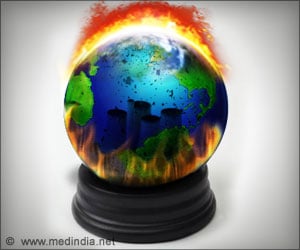The increase in length of melt season for Arctic sea ice by several days each decade and an early start this season is allowing the Arctic Ocean to absorb additional solar radiation.

She said that the lengthening of the melt season is allowing for more of the sun's energy to get stored in the ocean and increase ice melt during the summer, overall weakening the sea ice cover.
To study the evolution of sea ice melt onset and freeze-up dates from 1979 to the present day, Stroeve's team used passive microwave data from NASA's Nimbus-7 Scanning Multichannel Microwave Radiometer, and the Special Sensor Microwave/Imager and the Special Sensor Microwave Imager and Sounder carried onboard Defense Meteorological Satellite Program spacecraft.
Results show that although the melt season is lengthening at both ends, with an earlier melt onset in the spring and a later freeze-up in the fall, the predominant phenomenon extending the melting is the later start of the freeze season.
Some areas, such as the Beaufort and Chukchi Seas, are freezing up between six and 11 days later per decade. But while melt onset variations are smaller, the timing of the beginning of the melt season has a larger impact on the amount of solar radiation absorbed by the ocean, because its timing coincides with when the sun is higher and brighter in the Arctic sky.
The study has been accepted for publication in Geophysical Research Letters.
Advertisement









